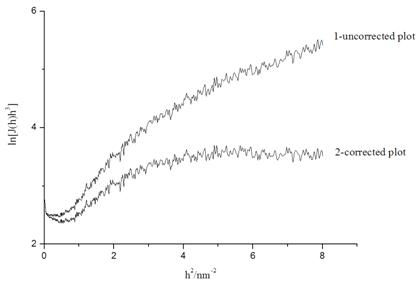| Preparation and characterization of porous carbon Spheres with controlled micropores and mesopores | |||||||||||||||||||||||||||||||||||||||||||||||||||||||||||||||
| From: PublishDate:2012-06-25 Hits: | |||||||||||||||||||||||||||||||||||||||||||||||||||||||||||||||
Porous carbon materials as a major candidate for hydrogen storage have attracted many scientific interests because of its light weight, abundant natural precursors, low cost, and high surface area. Tailored pore system of the porous carbon materials for hydrogen storage is an urgent matter. Functional materials group from the department of Physics in University of Science and Technology Beijing has developed a simple and effective synthesis strategy for porous carbon spheres whose microstructure was modified by controlling the synthetic condition. The microstructure of the carbon spheres was investigated and published on the Journal of Alloys and Compounds in September 2011. The porous carbon spheres were prepared by carbonizing the resorcinol–formaldehyde (RF) xerogel spheres at a high temperature under an argon atmosphere. In the synthesis, Commercial opaque polymer (OP) hollow spheres were used as templates and microreactors for polymerization of resorcinol and formaldehyde monomers. Resorcinol-formaldehyde was used as the carbon source. The carbon dioxide activation was applied to further control the pore structures and textures of the porous carbon spheres which closely associated with the hydrogen storage properties. Small angle X-ray scattering (SAXS) technique at Beijing Synchrotron Radiation Facility (BSRF) was applied to analyze the microstructure as shown in the following Figure and Table. Finally, the framework of resulting carbon sphere is hollow structure with a cavity of about 200 nm diameter. The wall of hollow carbon sphere is also porous with average pore diameter of 5~26 nm, porosity of 0.52~0.91, and specific surface of 210~670 m2/cm3 and 747~1606 m2/g. The pore characteristic of the hollow carbon spheres is alterable with the carbon source concentration, which can be used to modify the pore structures of the hollow carbon spheres. An appropriate treatment of CO2-activation can improve further the network structure of the carbon spheres and increase their specific surface area.
Pore structure of carbon spheres from different carbon source concentration, determined by SAXS using synchrotron radiation as the x-ray source with a long-slit collimation system at the Beijing Synchrotron Radiation Facility (BSRF). The structure of resulting carbon spheres is mesopores with average pore diameter of 5~26 nm, porosity of 0.52~0.91, and specific surface of 210~670 m2/cm3 and 747~1606 m2/g. For AC-xx series, the variation trend of the average pore size, porosity, and the specific surface is in rough accordance with that of CS-xx series, but the average pore diameter and porosity is lower, the specific surface is higher. It indicates that smaller pore is apt to result in higher specific surface.CO2-activation produces a large number of micropores reducing the average pore size and induces collapse of larger mesopores resulting in fall of porosity. The specific surface of the carbon spheres estimated is up to 1606 m2/g, which is higher than the surface area of 1405 m2/g for the activated carbon G212.
This research provides a new effective and simple approach to tailored porous carbon materials synthesis. The obtained porous carbon spheres remain promising candidates for cryogenic hydrogen storage. Synchrotron radiation SAXS technique is very helpful for us to unveil the microstructure of pore systems in materials.
Article: Xiaoping Jiang, Xin Ju*, Miaofeng Huang,Preparation and characterization of porous carbon Spheres with controlled micropores and mesopores, Journal of Alloys and Compounds, 2011, 509S, S864– S867. |
|||||||||||||||||||||||||||||||||||||||||||||||||||||||||||||||
|
|
| Chinese
Science Highlights
Home /
Copyright © 2011 - 2012 Beijing Synchrotron Radiation Facility


